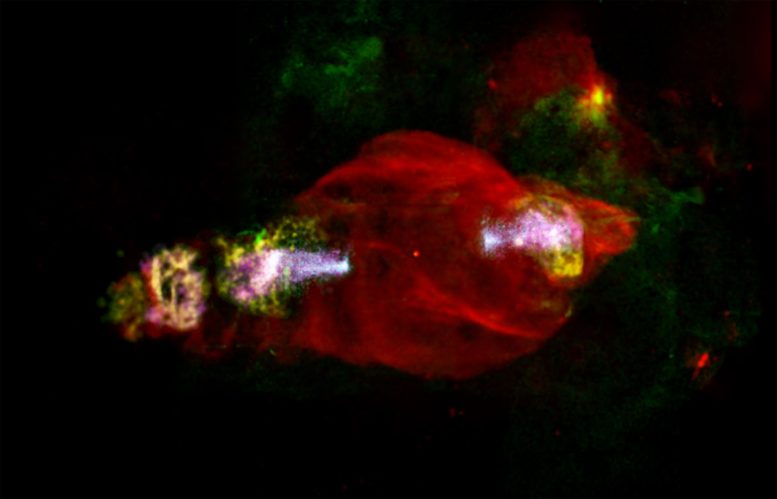
Manatee Nebula or W50, as captured by the X-ray space observatory XMM-Newton, also known as the High Throughput X-ray Spectroscopy Mission and the X-ray Multi-Mirror Mission. Credit: S. Safi-Harb et al (2022)
The European Space Agency’s XMM-Newton spacecraft has X-rayed this beautiful cosmic creature, known as the Manatee Nebula, pinpointing the location of unusual particle acceleration in its ‘head’.
The Manatee Nebula, also known as W50, is thought to be a large supernova remnant created when a giant star exploded around 30,000 years ago, hurling its shells of gases out across the sky. It is one of the largest known such features, spanning the equivalent size of four full Moons.
A black hole remains in its core, which is unusual for a supernova remnant. Known as SS 433, this central ‘microquasar’, emits powerful jets of particles traveling at speeds close to a quarter the speed of light that punch through the gassy shells, creating the double-lobed shape.
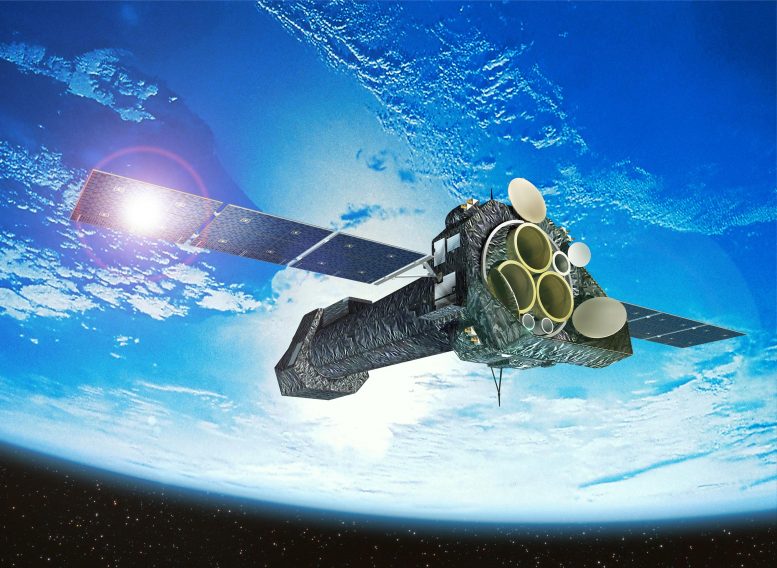
This illustration shows the X-ray mission XMM-Newton, the largest scientific satellite built by ESA (European Space Agency) to date, in Earth orbit. Credit: ESA/D. Ducros
SS 433 is identified by the red dot in the middle of the image. The X-ray data acquired by XMM-Newton are represented in yellow (soft X-rays), magenta (medium energy X-rays), and cyan (hard X-ray emission), while red is radio and green optical wavelengths imaged by the Very Large Array and the Skinakas Observatory in Greece, respectively. NASA NuSTAR and Chandra data were also used for the study (not shown in this image).
The nebula attracted attention in 2018 when the High-Altitude Water Cherenkov Observatory, which is sensitive to very high energy gamma-ray photons, revealed the presence of highly energetic particles (hundreds of tera electron volts), but could not pinpoint from where within the Manatee the particles were originating.
XMM-Newton was crucial in homing in on the region of particle acceleration in the X-ray jet blasting from the Manatee’s head, which begins about 100 light years away from the microquasar (represented by the magenta and cyan colors towards the left side SS 433) and extends to approximately 300 light-years (coinciding with the radio ‘ear’ where the shock terminates).
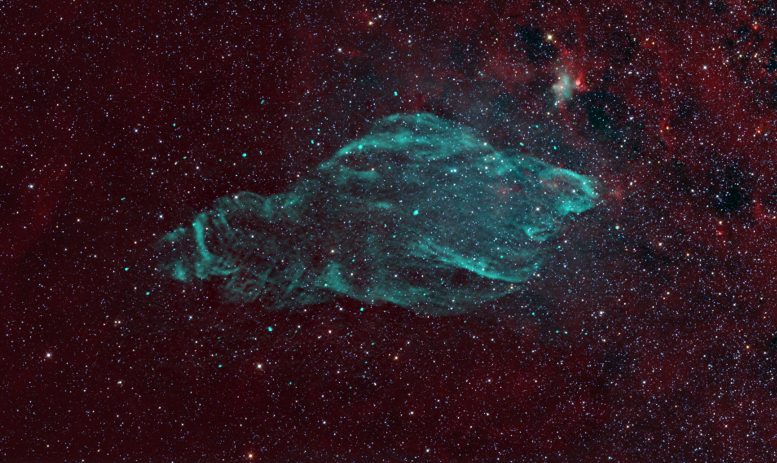
The Manatee Nebula as imaged by the Very Large Array (VLA). Credit: B. Saxton, (NRAO/AUI/NSF) from data provided by M. Goss, et al.
Samar Safi-Harb of the University of Manitoba, Canada, who led the study, says “thanks to the new XMM-Newton data, supplemented with NuSTAR and Chandra data, we believe the particles are getting accelerated to very high energies in the head of the Manatee through an unusually energetic particle acceleration process. The black hole outflow likely made its way there and has been re-energized to high-energy radiation at that location, perhaps due to shock waves in the expanding gas clouds and enhanced magnetic fields.”
The nebula acts as a nearby laboratory for exploring a wide range of astrophysical phenomena associated with the outflows of many galactic and extragalactic sources and will be subject to further investigation. Furthermore, follow-up studies by European Space Agency’s future Athena X-ray observatory will provide even more sensitive details about the inner workings of this curious cosmic Manatee.
Reference: “Hard X-ray emission from the eastern jet of SS 433 powering the W50 ‘Manatee’ nebula: Evidence for particle re-acceleration” by Samar Safi-Harb, Brydyn Mac Intyre, Shuo Zhang, Isaac Pope, Shuhan Zhang, Nathan Saffold, Kaya Mori, Eric V. Gotthelf, Felix Aharonian, Matthew Band, Chelsea Braun, Ke Fang, Charles Hailey, Melania Nynka and Chang D. Rho, 24 August 2022, The Astrophysical Journal.
DOI: 10.3847/1538-4357/ac7c05
arXiv:2207.00573

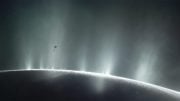






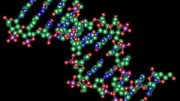
Be the first to comment on "Beautiful Cosmic Creature Accelerates Particles From Head"